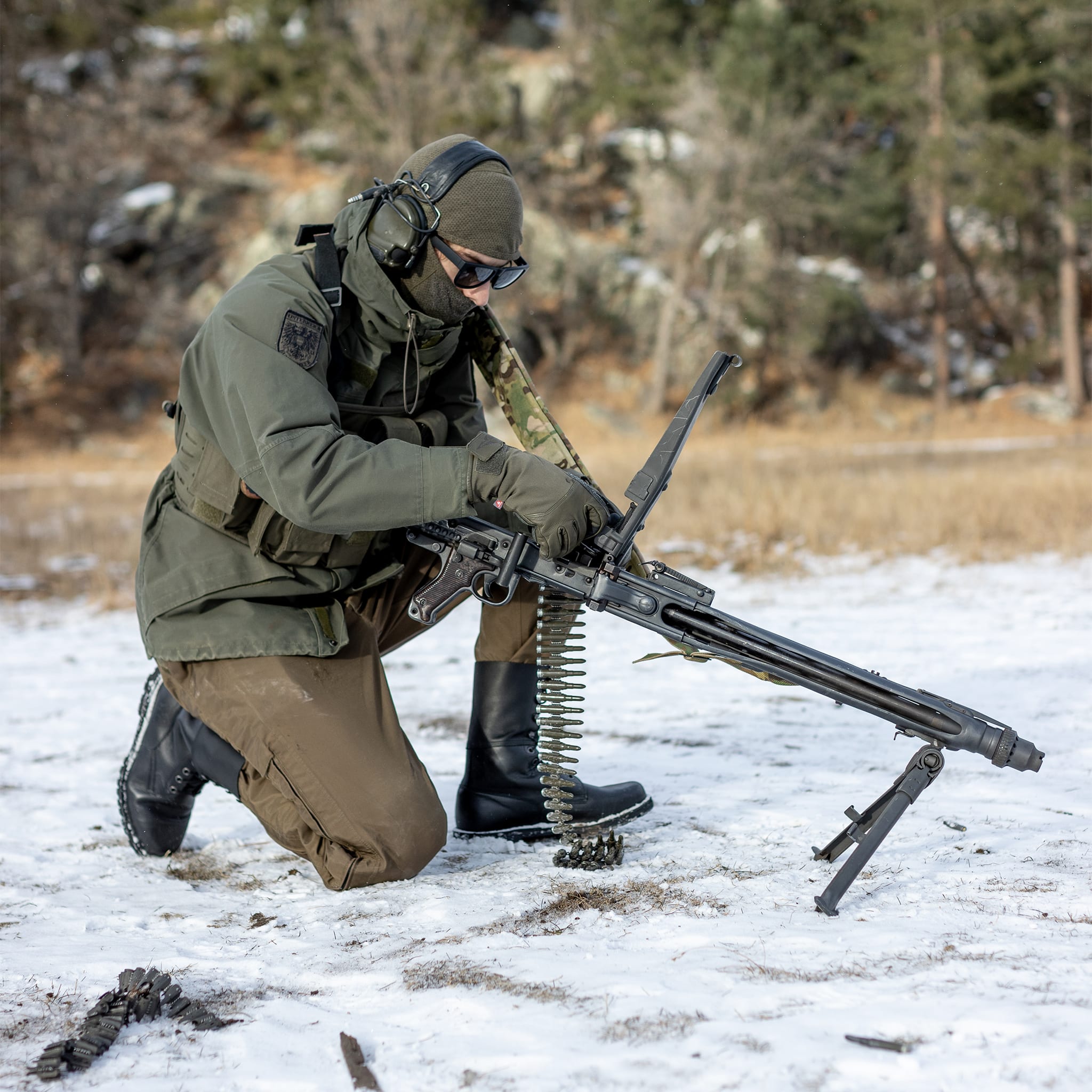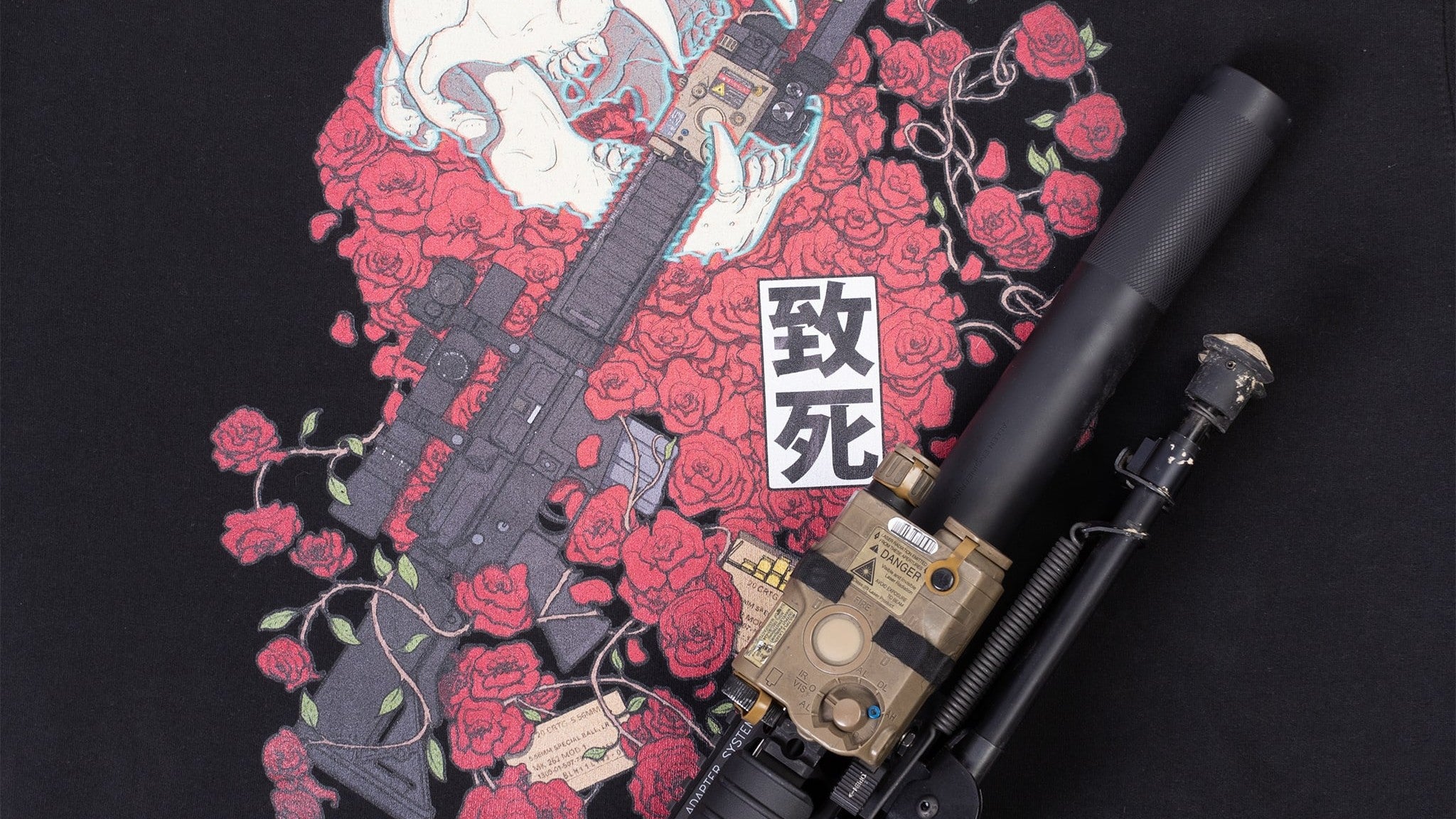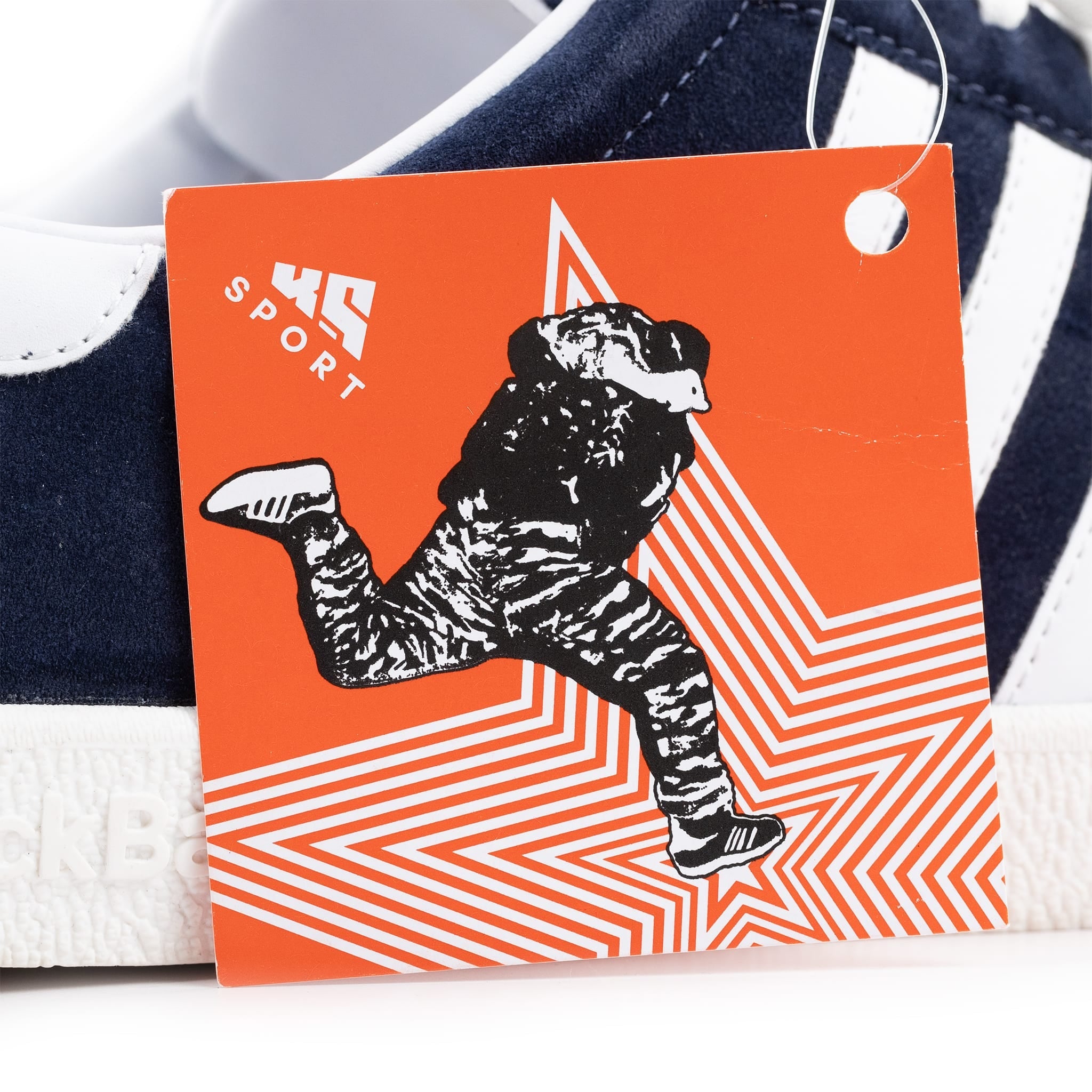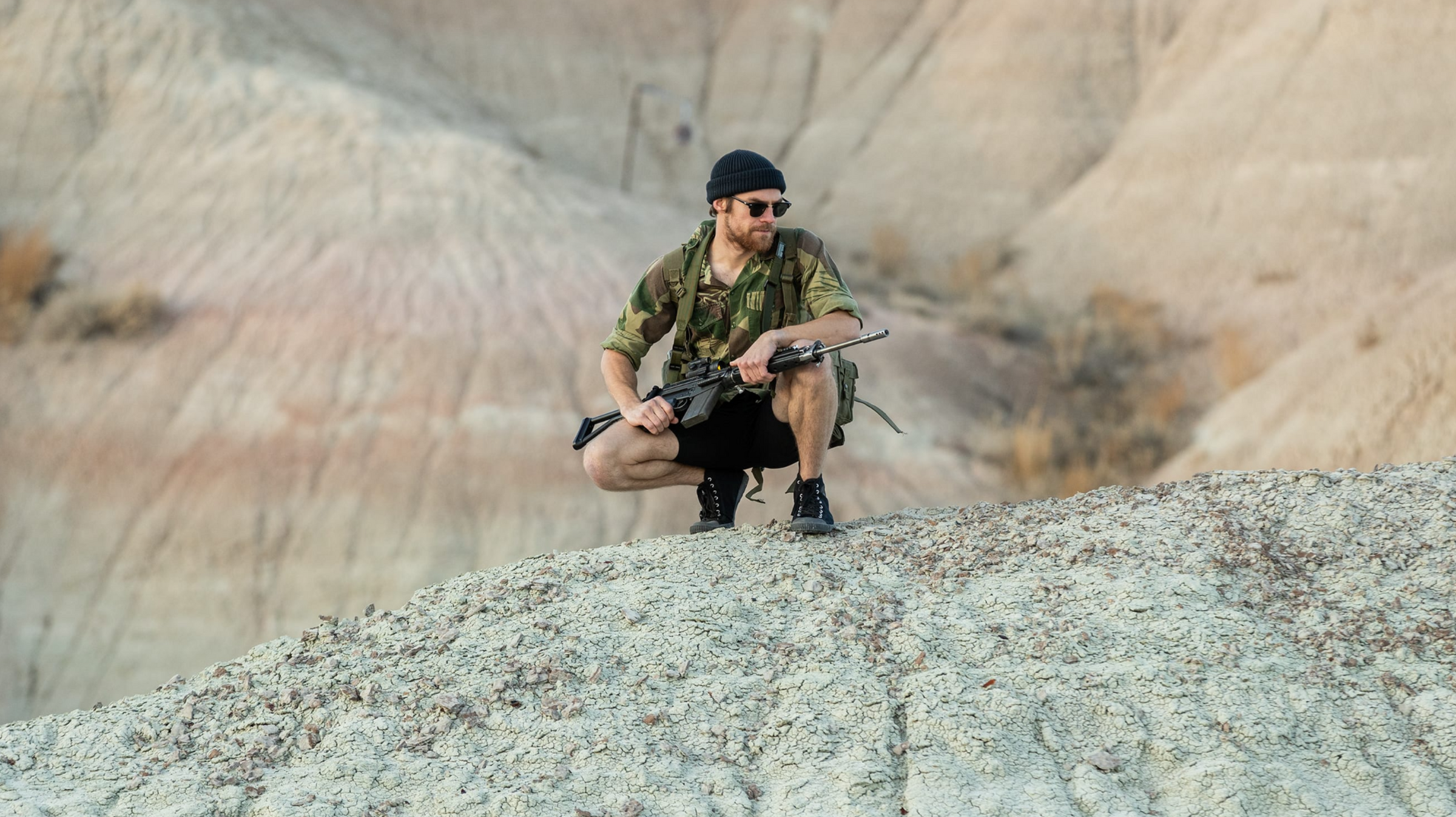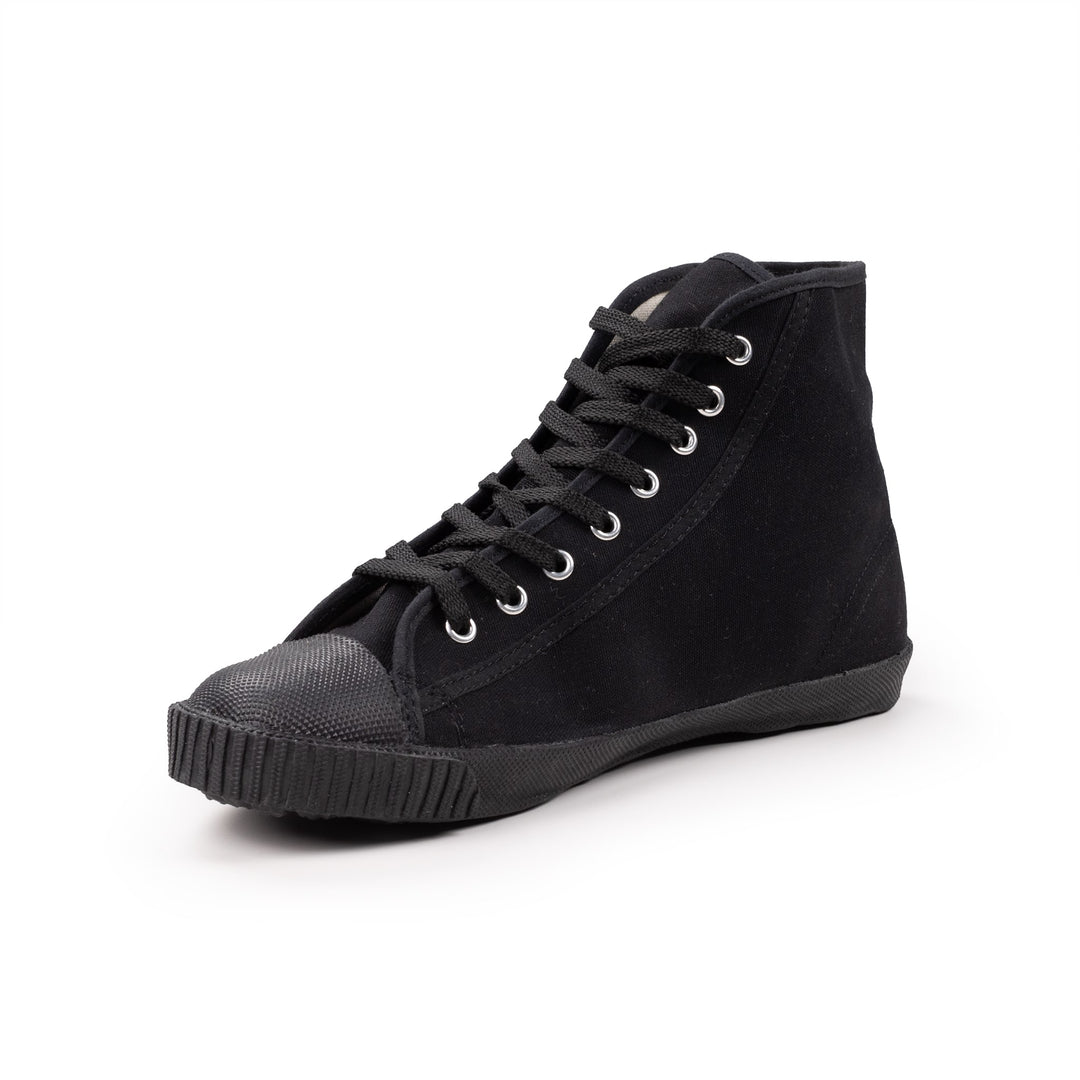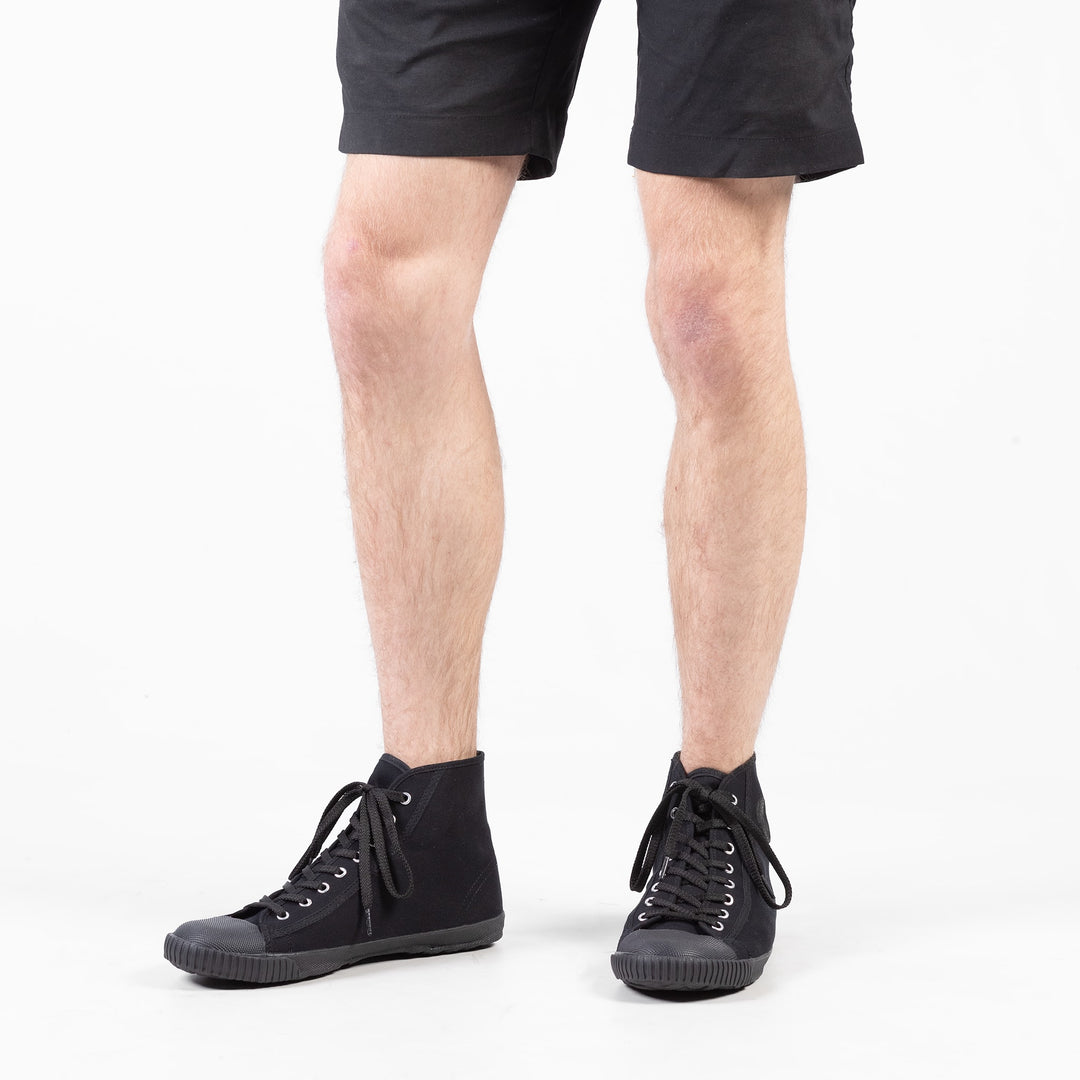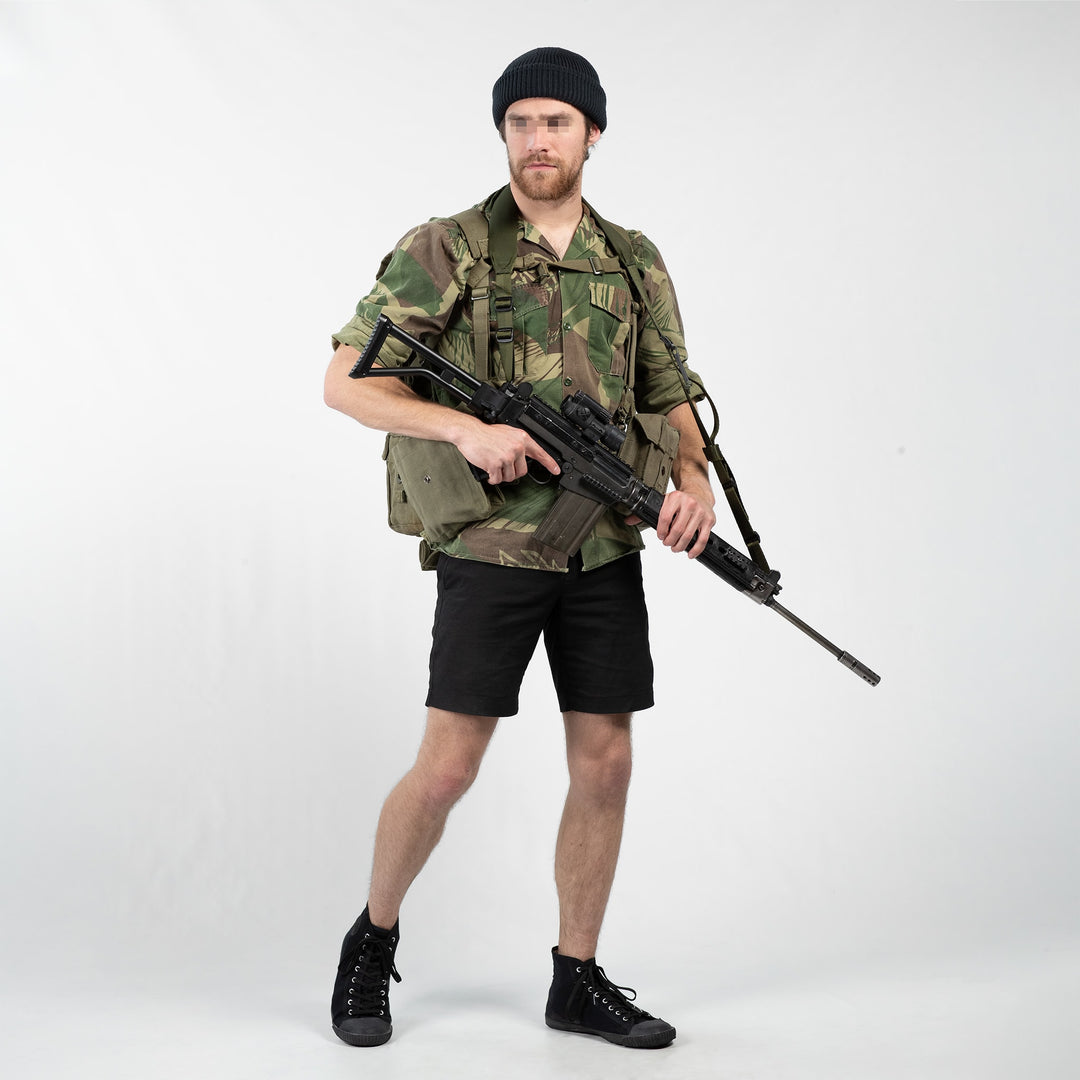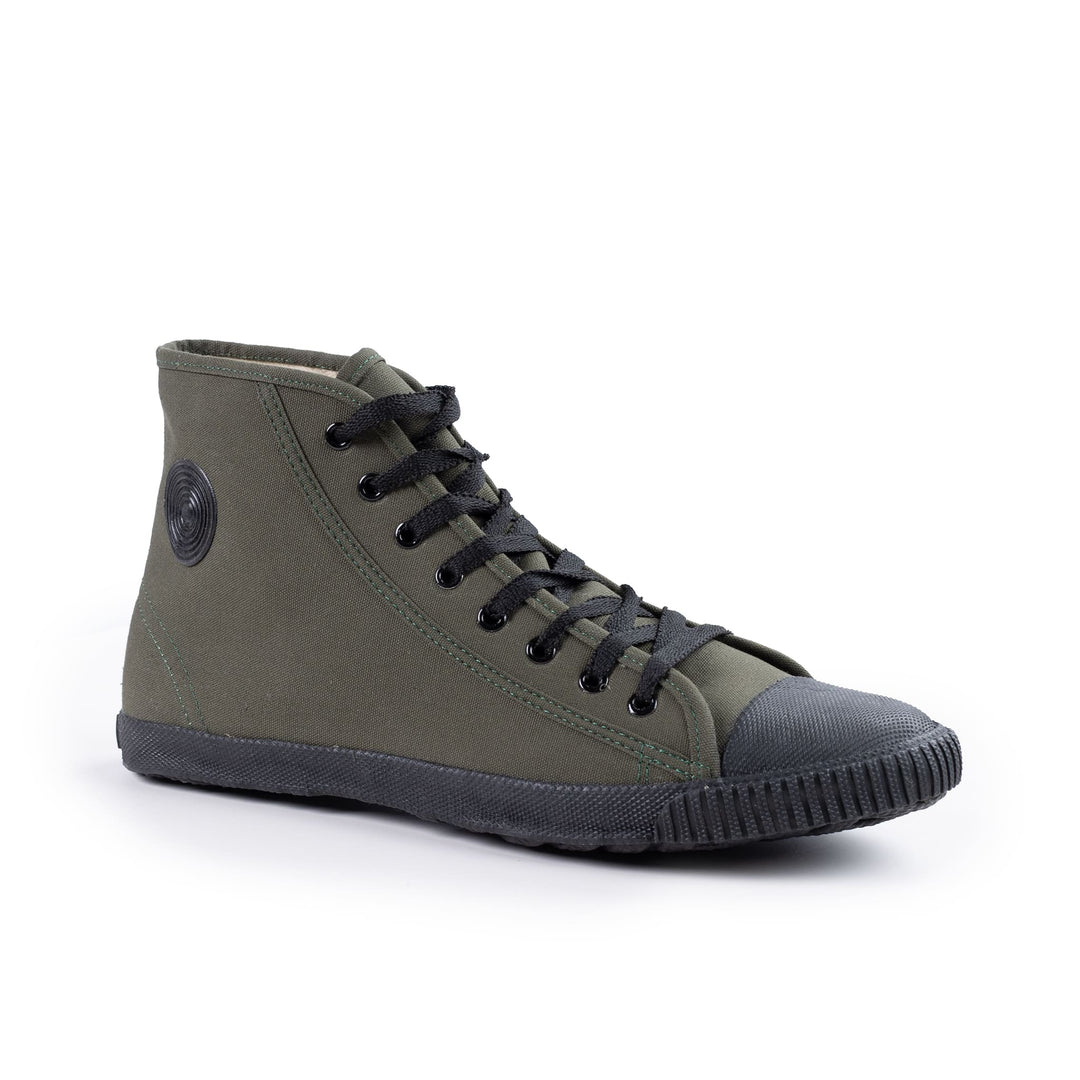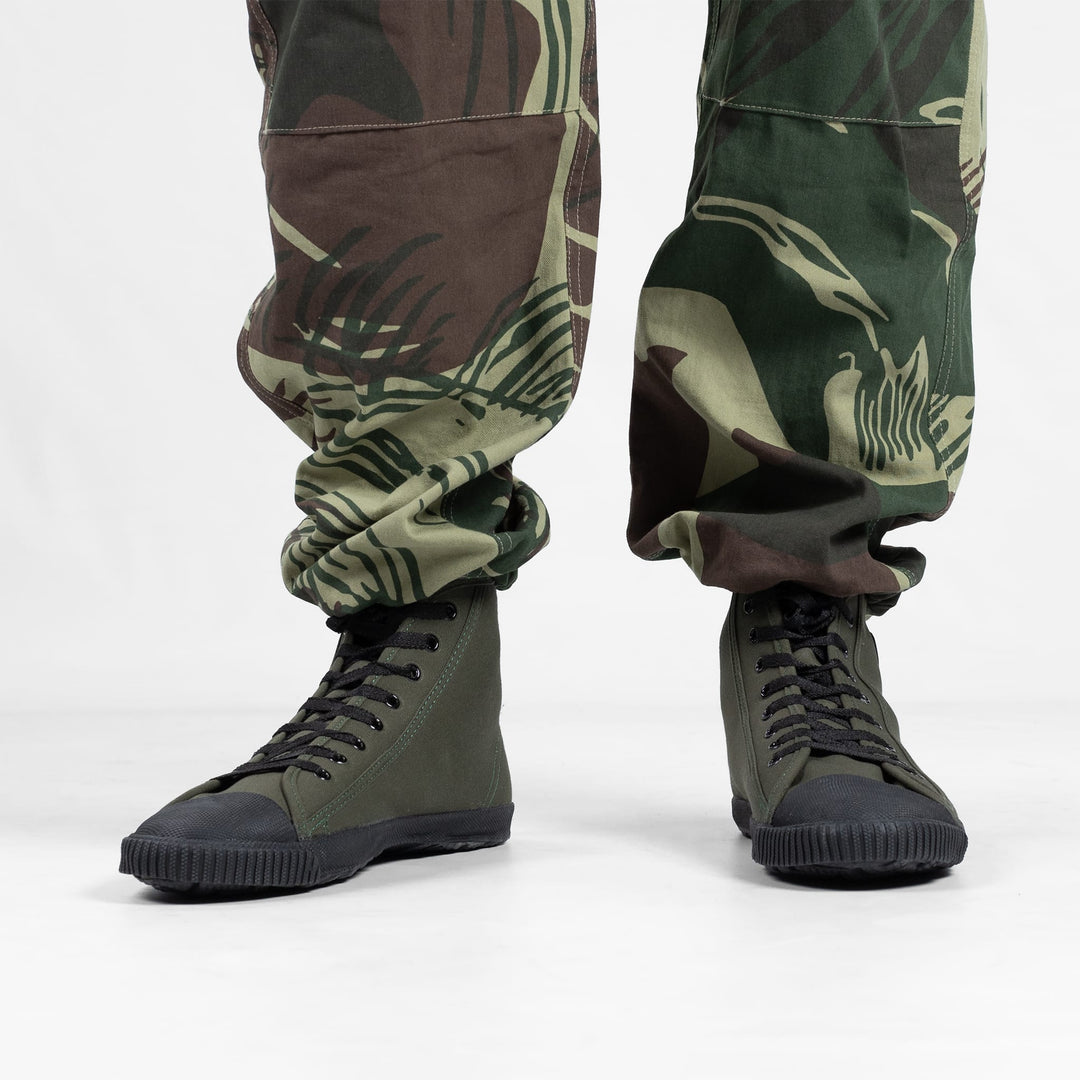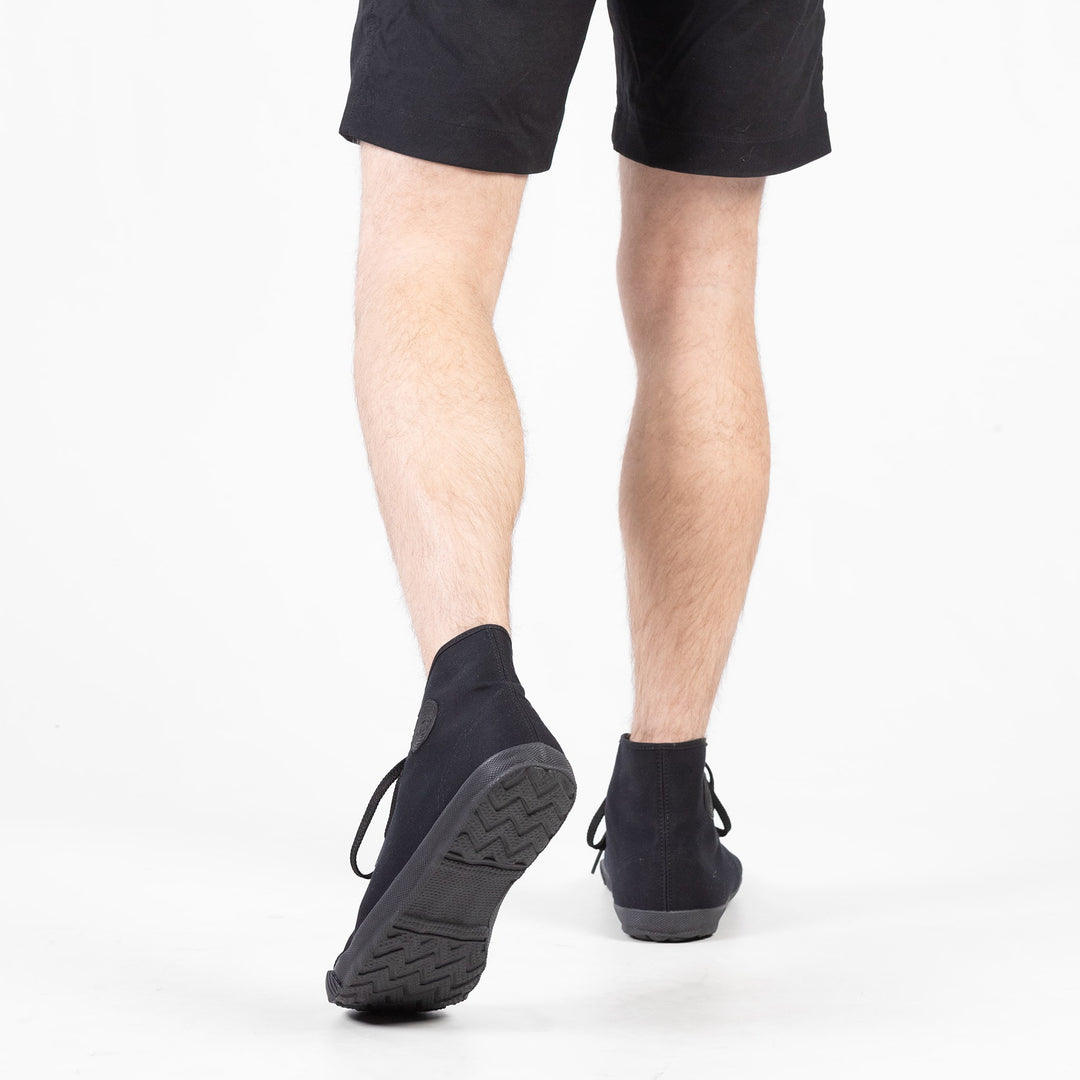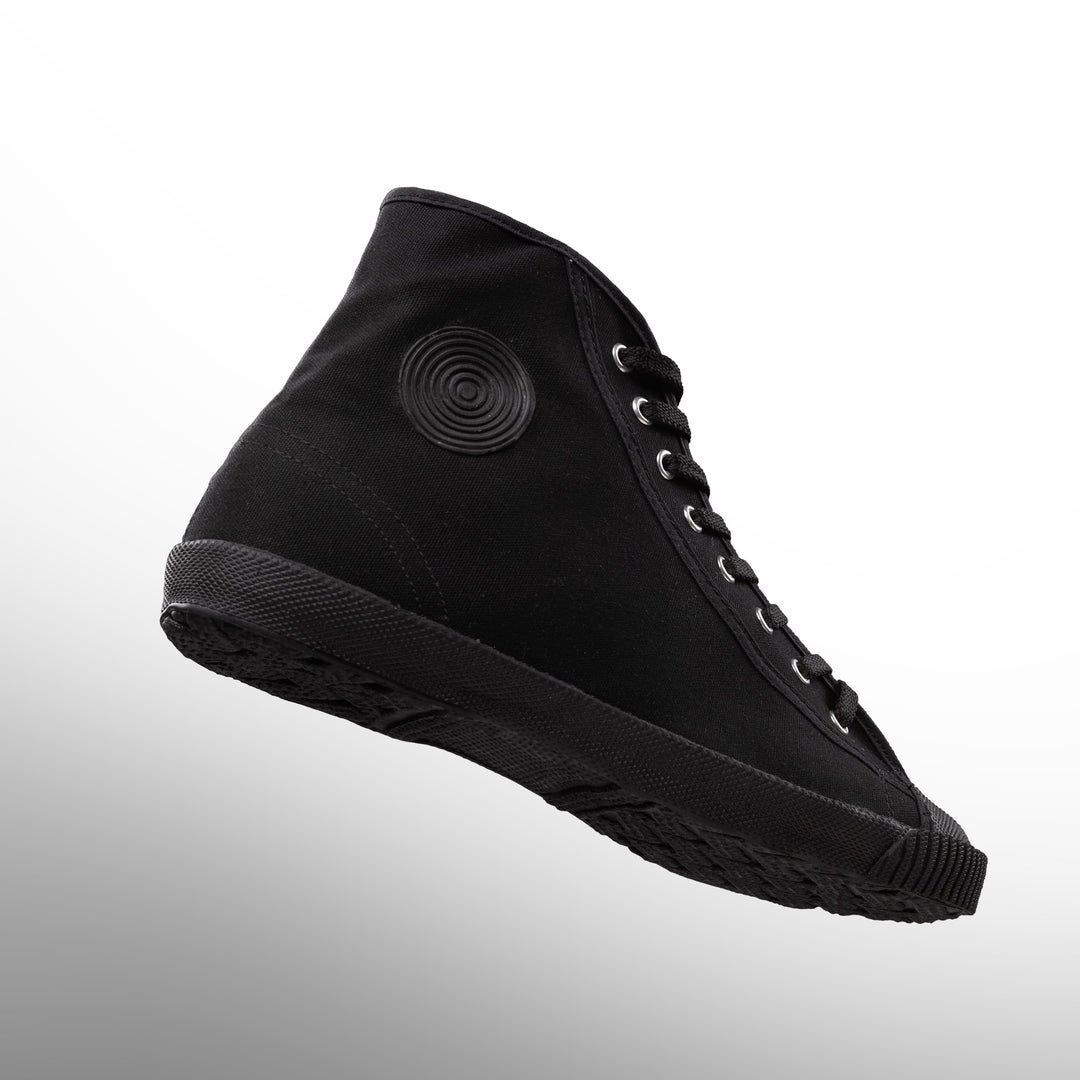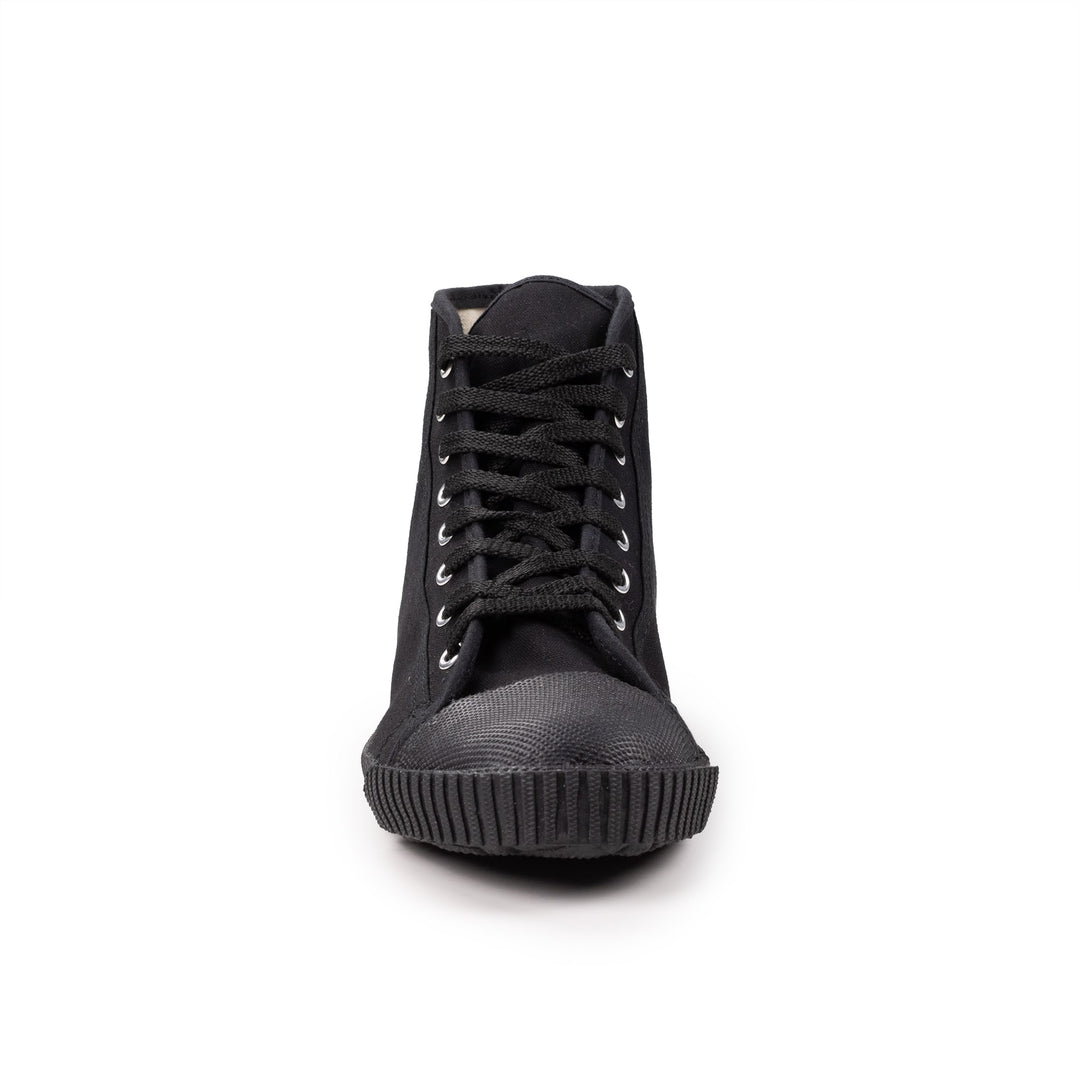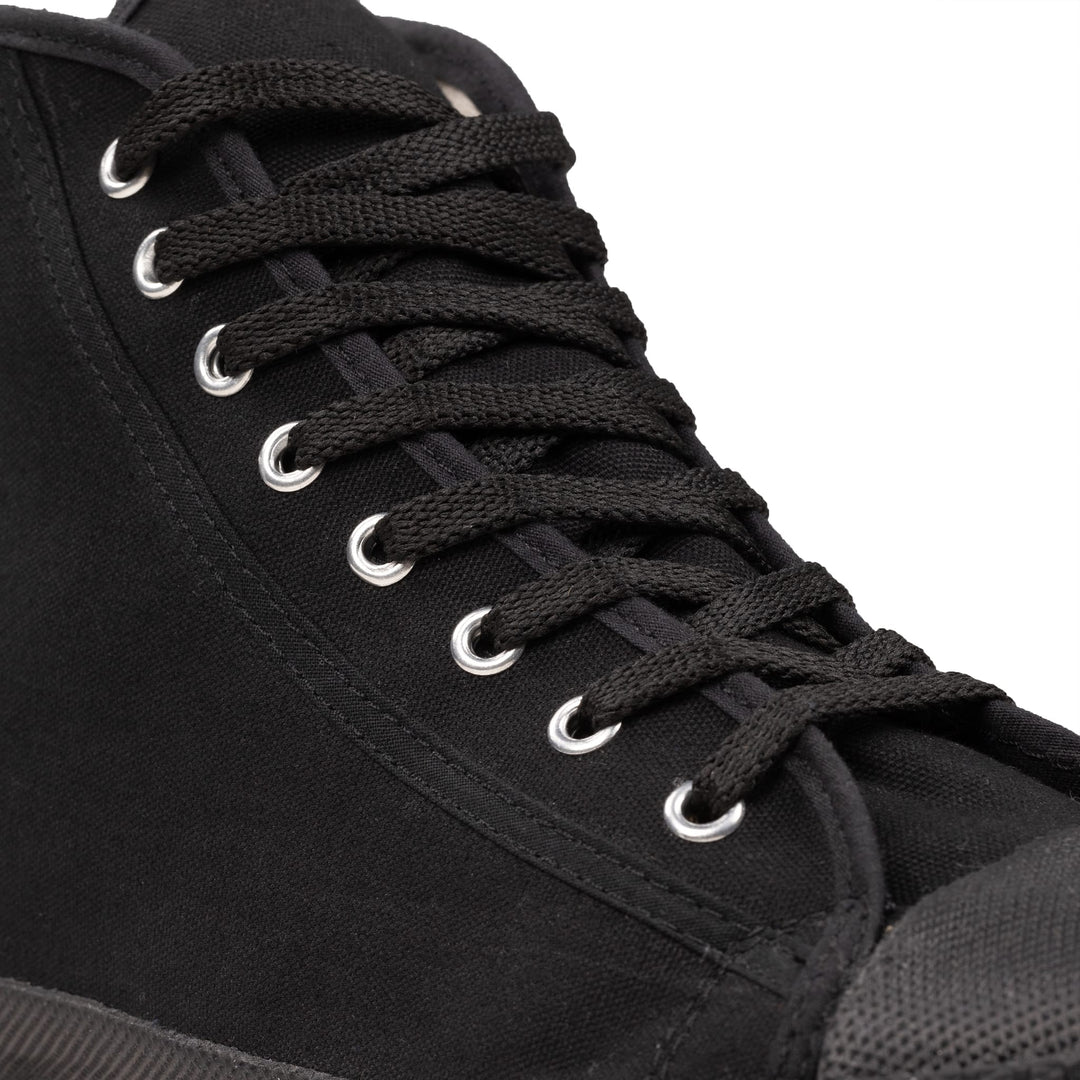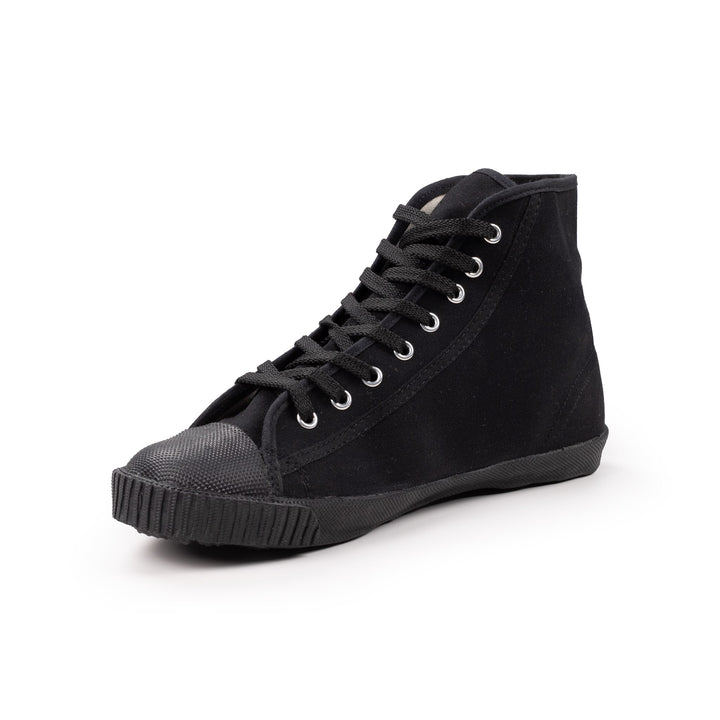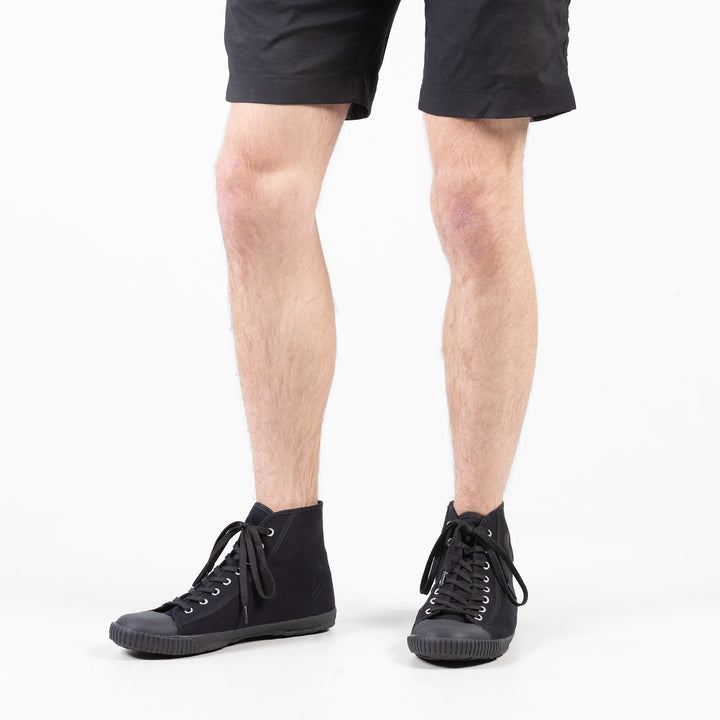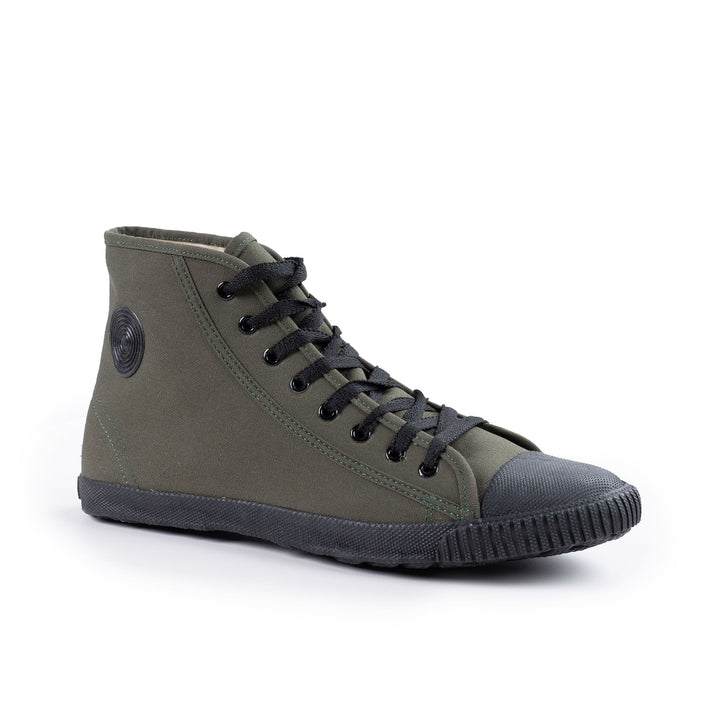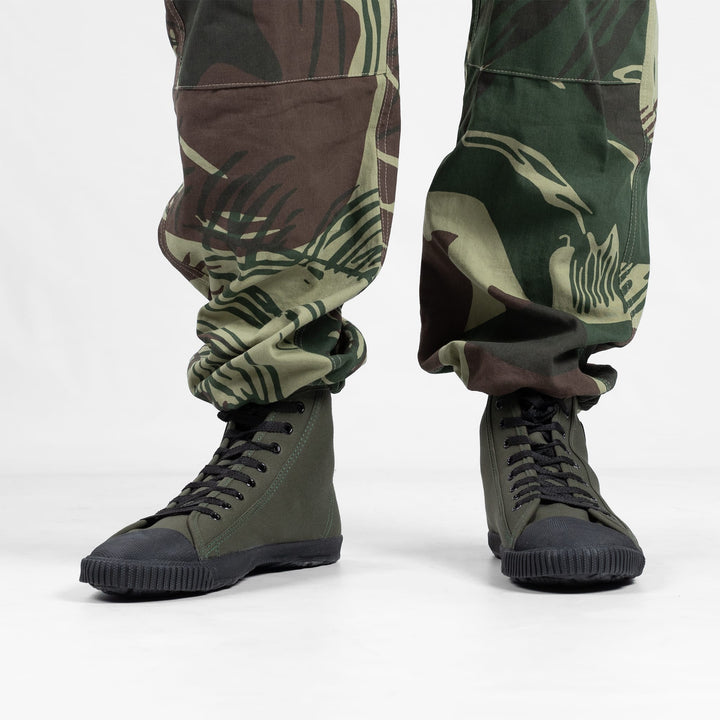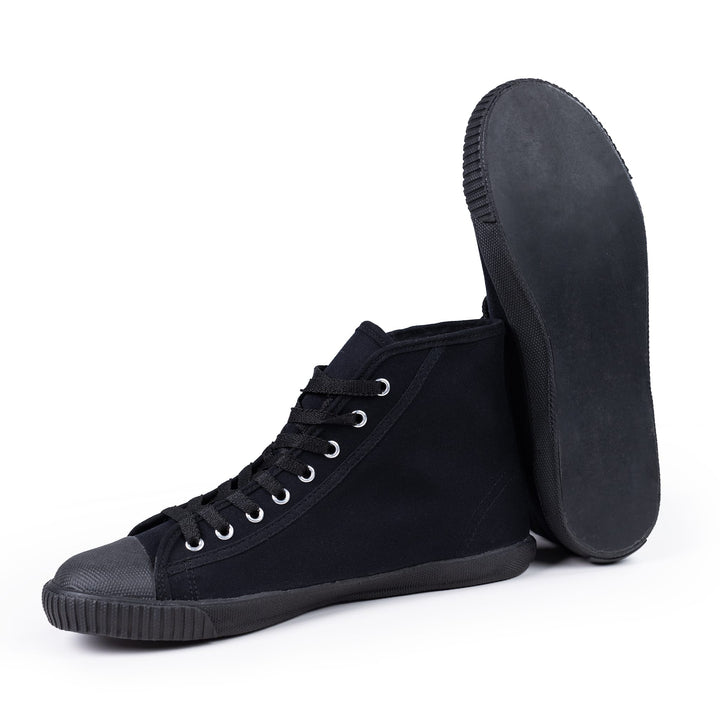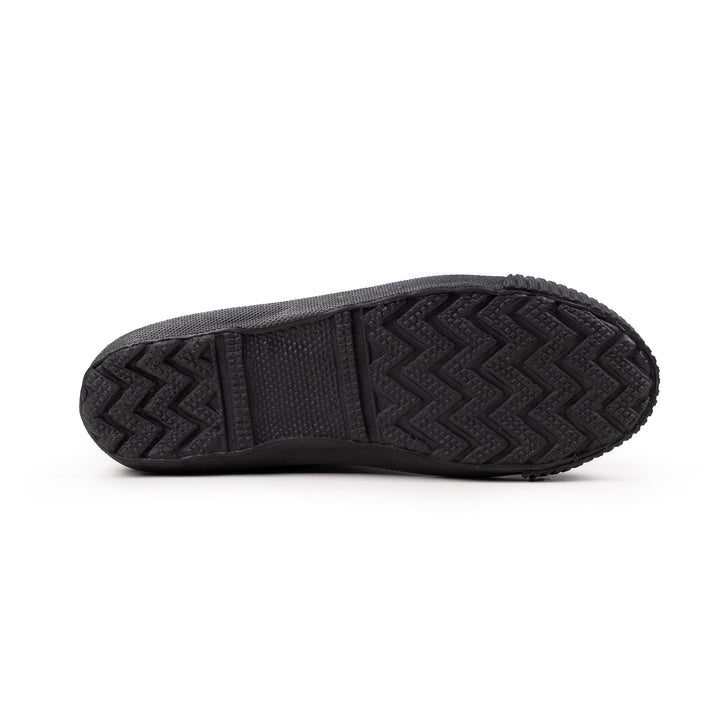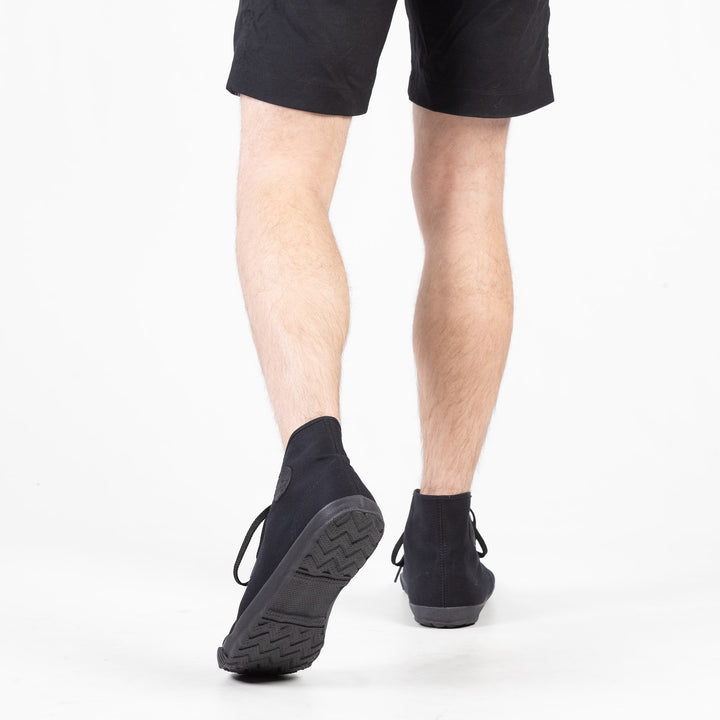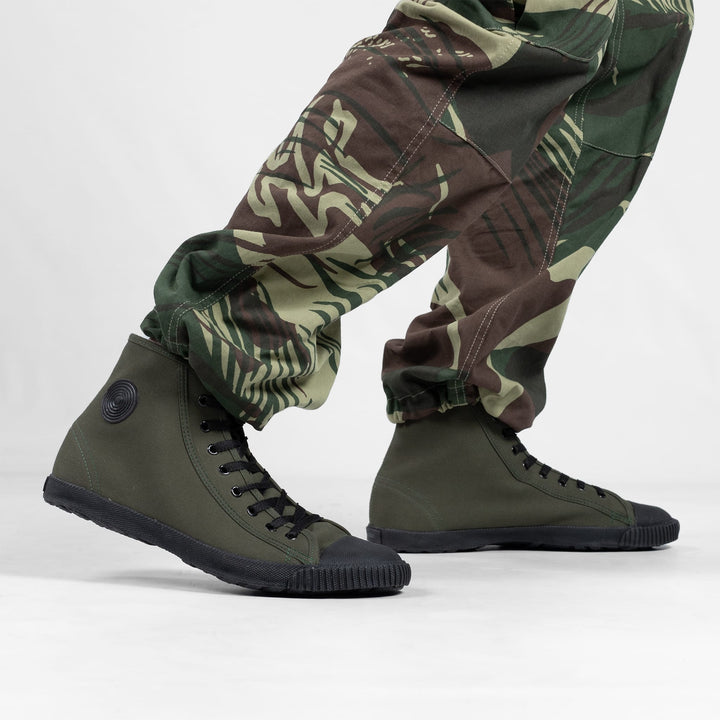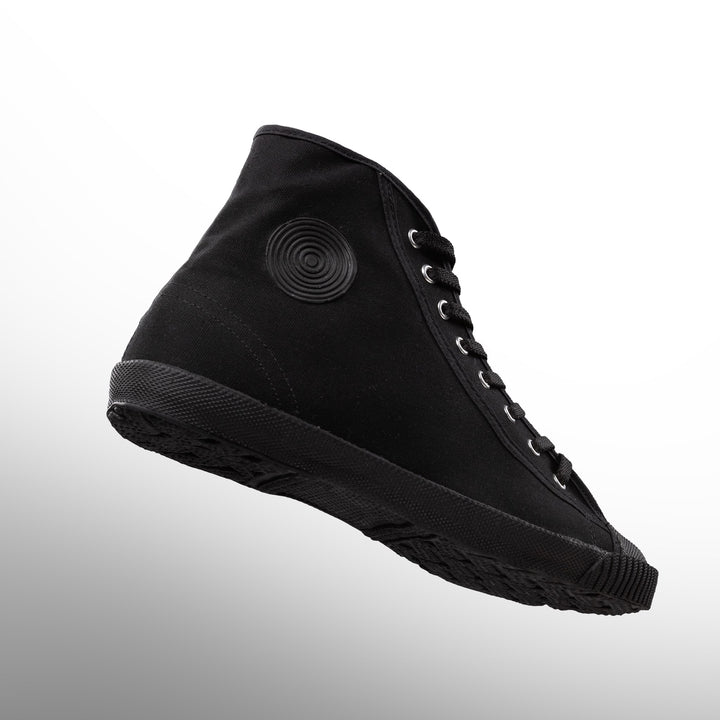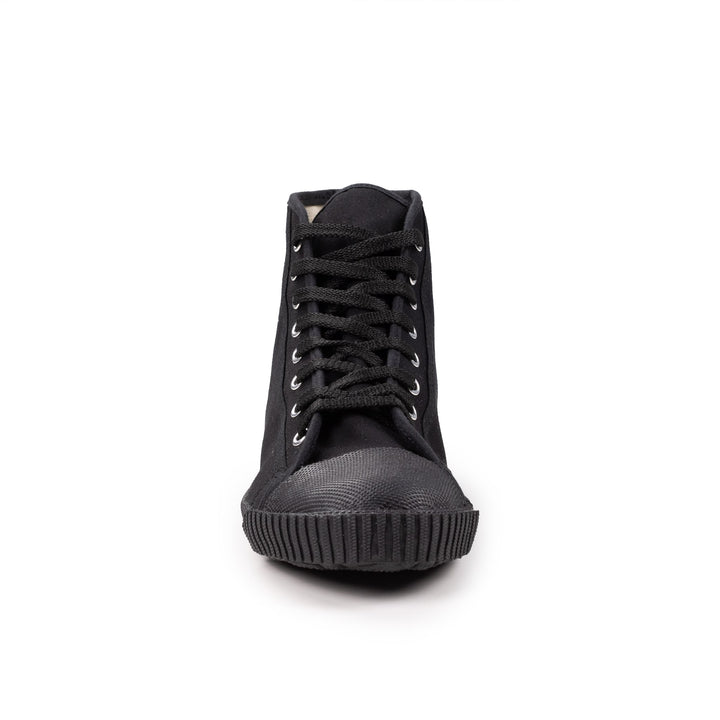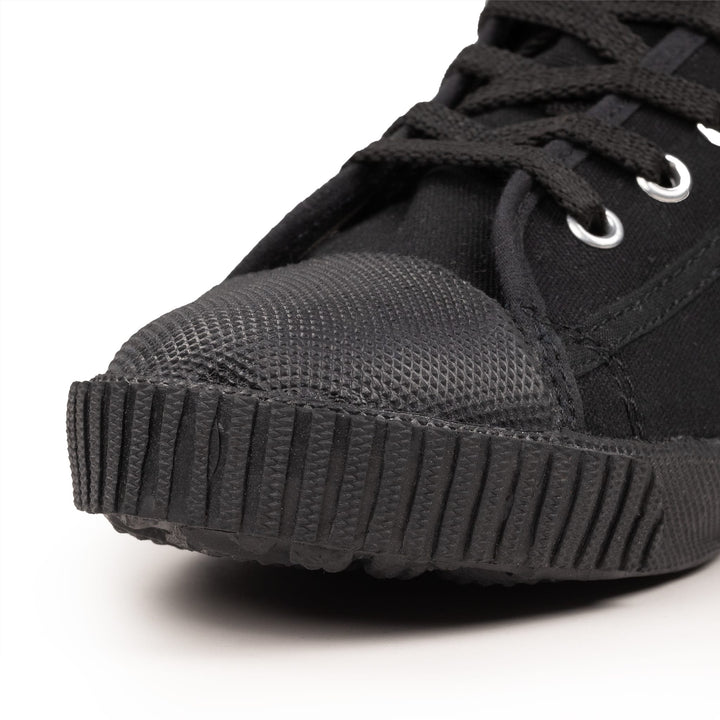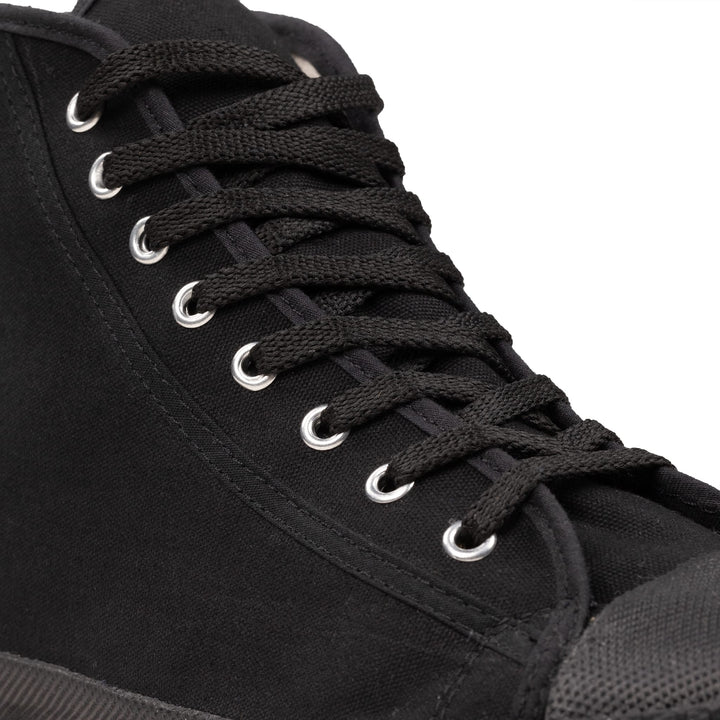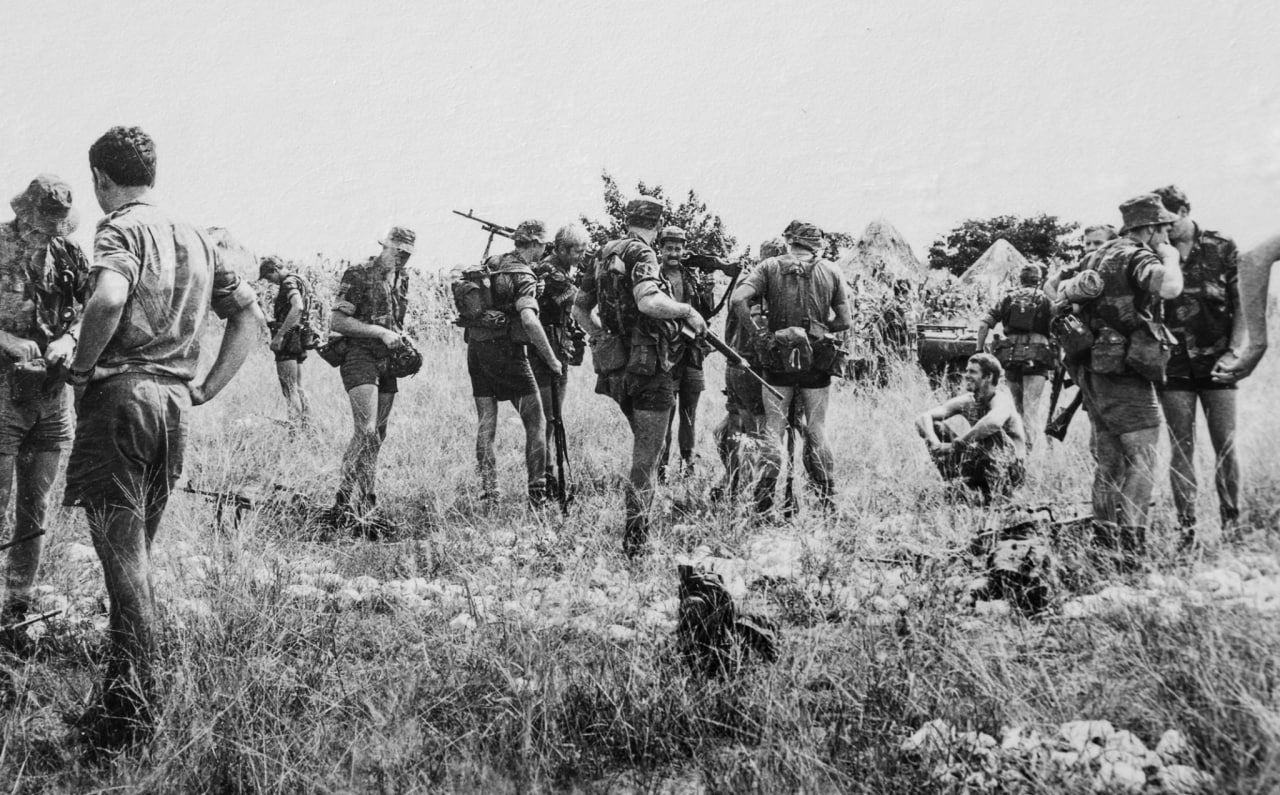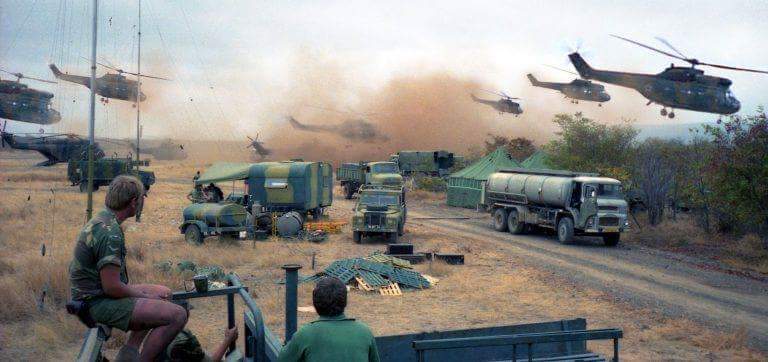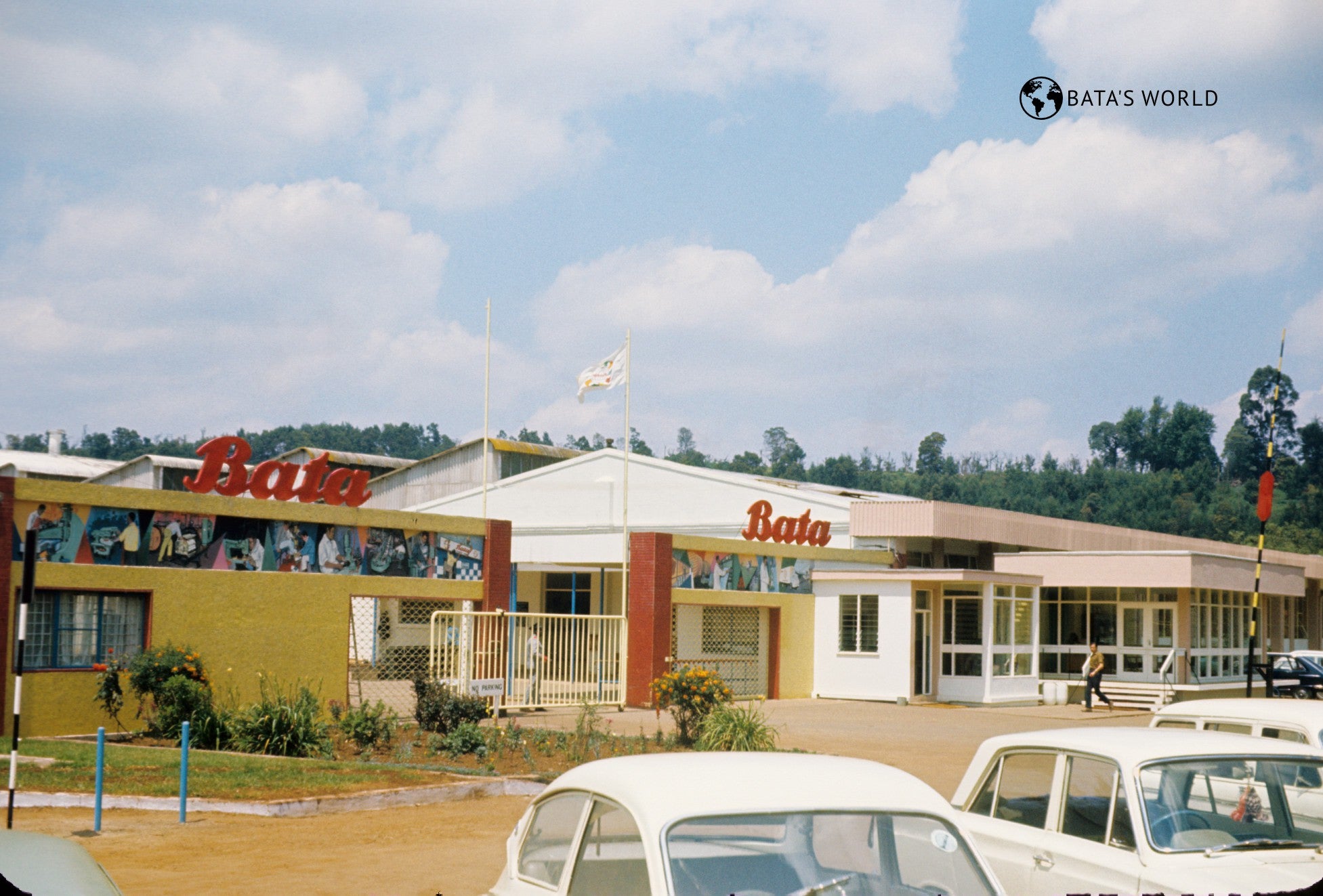- Made in Zimbabwe (Formerly Rhodesia)
- Genuine New Production Bata Product
- Canvas Upper
- Rubber zig-zag outsole for extra grip
- Iconic styling cues of 1960s era hockey sneakers
- Metal eyelets & rubber toe cap for lasting durability
Hockey Shoes?
Nothing goes better together than South Africa and hockey shoes? No, not ice hockey.
Typically played on grass or hard packed dirt, field hockey is substantially different from ice hockey (obviously.) As you can imagine, countries around the equator can't find ice to save their lives, but field hockey remains a popular pastime especially in the warmer commonwealth (or ex-commonwealth countries.)
With the commercialization of synthetic rubber and the advent of new shoe manufacturing methods post WWII, all varieties of 'field hockey' shoes exploded in popularity. Brands like Converse, Palladium, and Chuck Taylor were nothing short of a worldwide phenomenon.
So hockey shoes were light weight, cool, athletic, and ideal for moving quickly.
That sounds like it could come in handy.
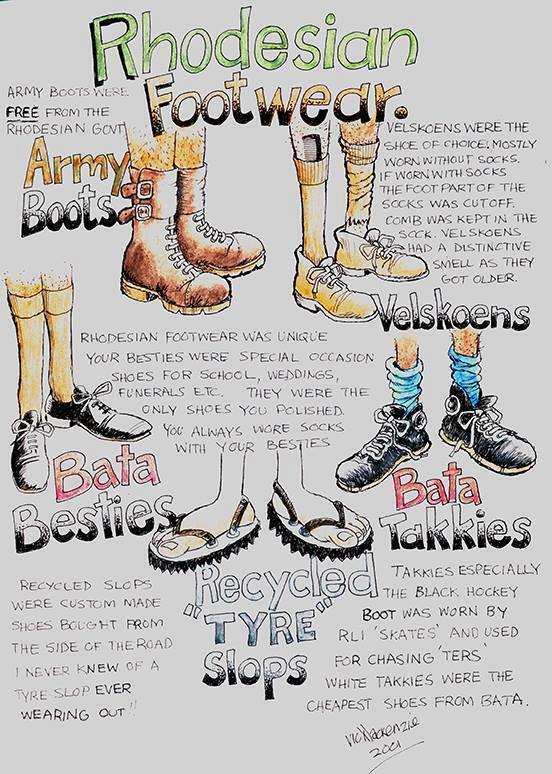
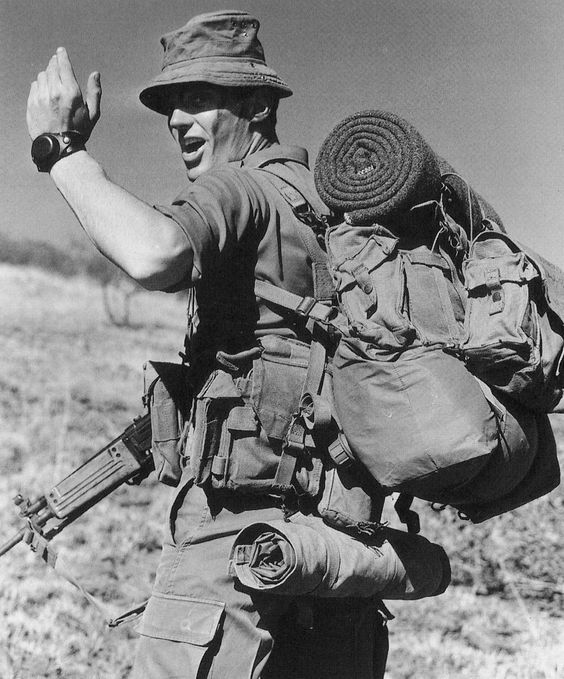
Rumble In The Bush
The formative years of more recent Central & Sub-Saharan African Culture was during the Bush War & Border wars — Conflicts which dominated South Africa and Zimbabwe (formerly Rhodesia) during the Cold War. Outside of Africa and certain military circles both of these wars have faded into obscurity...
At the height of the Border and Bush wars, The South African Military themselves geographically, economically, and diplomatically isolated. They would be facing off against the best efforts of the USSR, North Korea, Cuba, Egypt, and several members of the Soviet Bloc. All of whom would be providing training, arms, logistics and advisory support to a rainbow of communist terrorists, militant groups, and Sub-Saharan nation states. The resulting violence was characterized by its fast pace and indiscriminate brutality — with frequent attacks on public infrastructure and civilian populations.
Recces & Rhodies
This period of counter-insurgency combat in the African savanna and wildlands forced tactical and material improvisation. Scrambling to stay competitive, South Africa would develop doctrines and equipment that would stay relevant for decades to come.
South Africa’s elite Recce units (short for “Reconnaissance”) were the cream of the crop in counterinsurgency. They were experts in tracking & long-range patrols far behind enemy lines, often in small groups. In truth though, they did far more. They became the “go-to” fighting force for nearly everything, from airborne raids to underwater demolitions.
With all that trekking and punishing embargos came the need for lighter, faster footwear than the stiff & heavy European styled combat boots that were commonly issued.
Limited by attrition and embargos, Troopies frequently purchased their own kit on the private market...
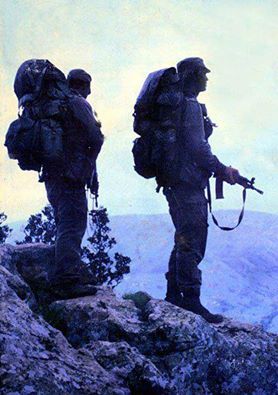
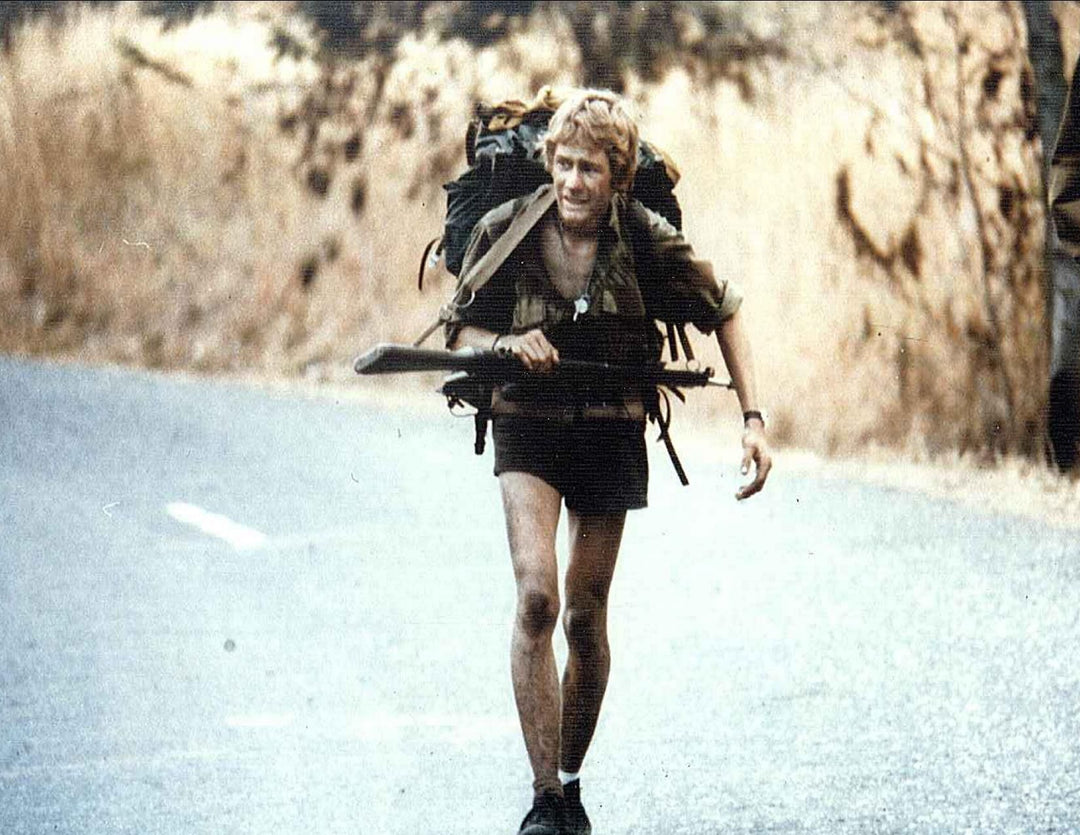
Bata Begins
They turned to civilian hockey shoes, otherwise affectionately known by their nickname, "takkies". Similar to many designs from the 60s with their canvas upper and rubber sole they were produced by the local shoe conglomerate Bata.
Inexpensive (being quite literally the cheapest shoes from Bata at the time) and effective, perfect for when you want to ruck the entirety of the African savannah in hot pursuit of some “terrs” or a mooi meisle.
They already didn’t leave the same boot print as standard issue combat boots did, but they commonly sanded the soles flat — In the dusty conditions of the bush, the flat soles left faded prints, disguising fresh tracks as weeks old.
This allowed some measure of plausible deniability and concealment for any Recces & Rhodies operating somewhere the commies didn't want them to be.
Fast Forward
In our various dealings with South African suppliers and quite a few imports of the legendary Waxi Boot, we kept stumbling on Bata.
They were without a doubt a footwear juggernaut in Africa, and knowing the illustrious history of the Takkies we did everything we could to finally get in contact with them. Turns out, the Zimbabwean factory is still pumping out shoes, albeit much more modern models.
Theoretically, if they wanted to, they could go full retro and make the very same models they did in the 70s and 80s...
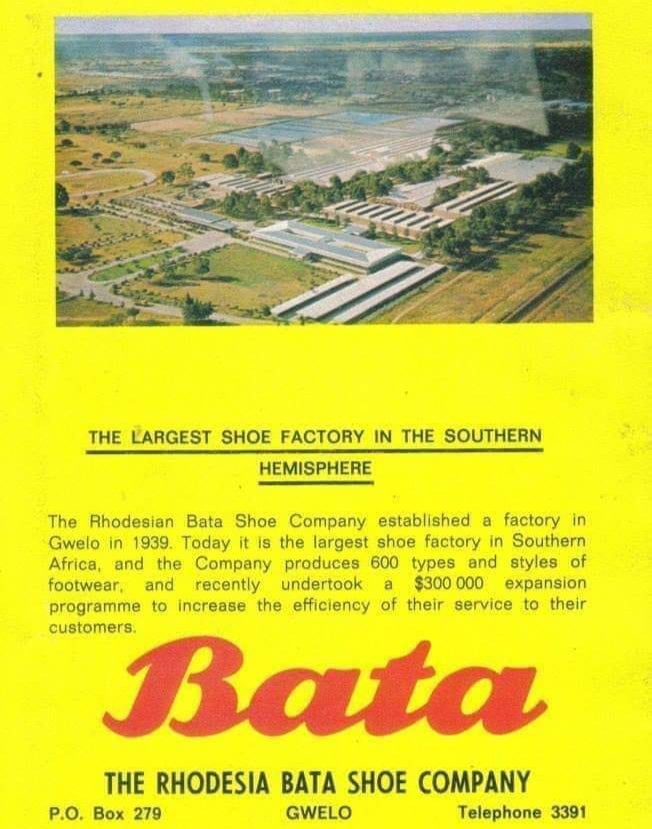

And bata did express the desire to bring back their classics to us.
The famous "takkies" could only be made in Zimbabwe, at the very same factory that made them while Zimbabwe was still Rhodesia.
The Takkies of this exact form are almost entirely off the commercial market, and we worked directly with Bata to bring them back by using their archival models as a reference. Make no mistake, besides a different tag (with our name on it), these are 100% authentic to the OGs the Selous Scouts & Recces wore.
Flexible, lightweight and covert, the Bata Takkies are an excellent choice whether your combat involves any bushwhacking or it’s just trying to survive downtown in an American city.




